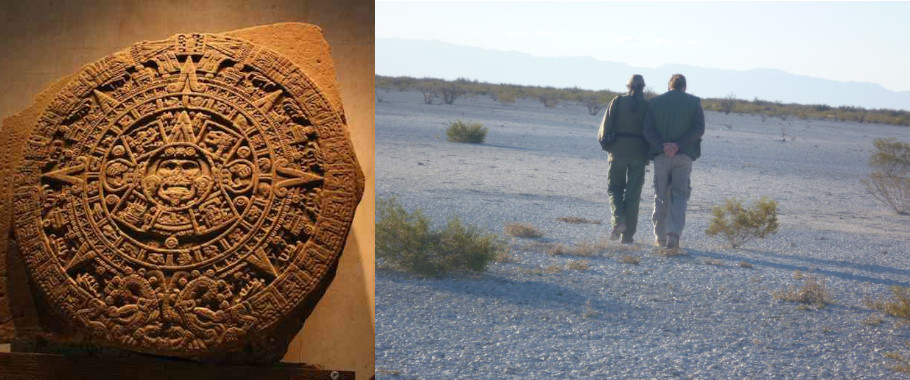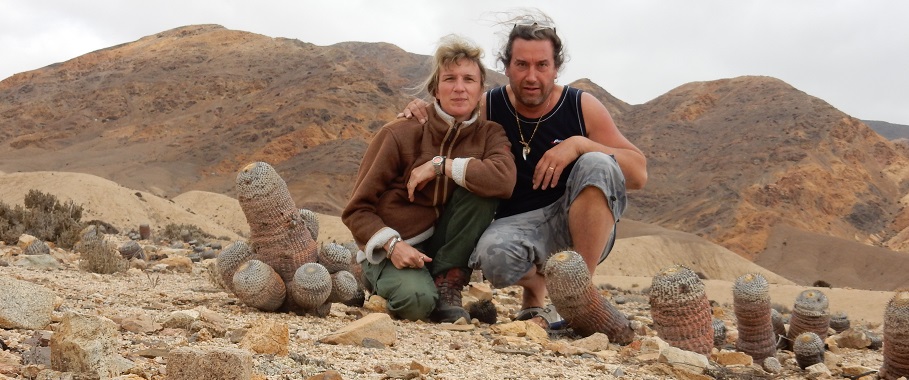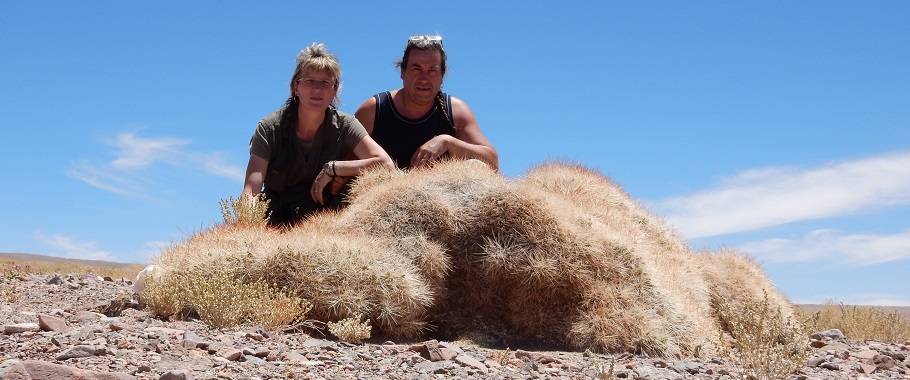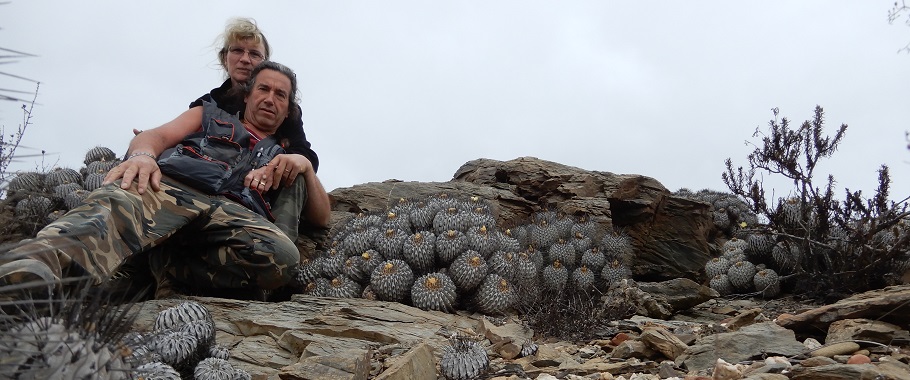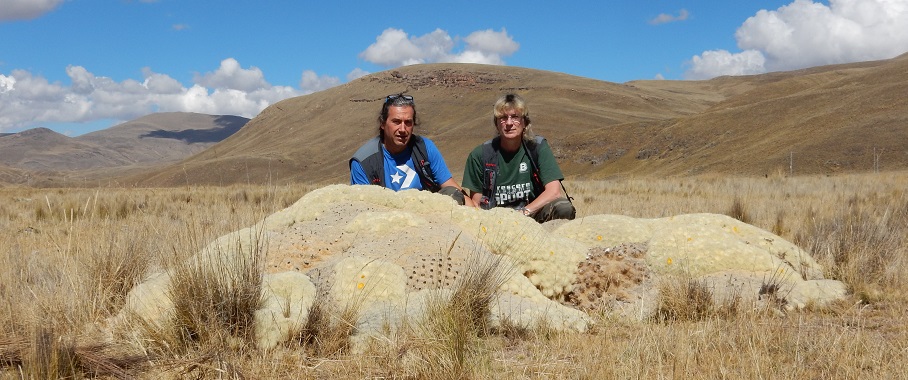- Details
- Kategorie: I Nostri Viaggi
- Veröffentlicht: Samstag, 01. Januar 2022 09:48
- Geschrieben von Elvia
- Zugriffe: 2245
It was time to change destination.
After much Mexico it was time to look for other places to explore. Thinking about the plants we prefer, one of the most popular genres are opunziacee, we decided to look towards the south of the American continent. Informing us about species present in the various States, we chose Argentina. Late October is a good time to go there, whereas there is full spring.
The Iberia flight from Madrid to Buenos Aires was right on schedule. We had decided to come to the capital to visit it before leaving. Taking the rental car and hurried up some formalities we went to the north, passing through the city of Rosario, Cordoba to Tucuman, where he began the search for plants.
First base city Salta: typical Spanish style, clean, cozy and with a variety of accommodation options ... even with regard to the restaurants we found ourselves very well.
The first area visited is the Quebrada del Toro, from here, along Route 51, we arrive at the border with Chile, there is also a train for tourists "Tren a las Nubes" (literally train to the clouds) that is the most popular station in the country, dating back up to the colorful Quebrada amazing viaduct, The Polvorilla, 64 meters high and 224 meters long that runs through a wide gorge deserted.
When we left early in the morning there was a cloudy and uncertain but as they climbed past the mt. 2000, the sun illuminated the beautiful landscape that opened our eyes.
The first population of Gymnocalcium Spegazzini met was a disappointment: the plants were all covered with a kind of rust and not only them but also the rest of succulent vegetation (Tunilla, Parody, etc.) but after a few miles a second encounter with this species there left open-mouthed ... the plants were beautiful.
For those who love the thorns I have been among the most beautiful specimens of cactus ever seen: the envy of many Mexican species!
There are many varieties found among beautiful landscapes:
Rebutia minuscola, Cleistocactus hyalacanthus, Trichocereus terscheckii, Trichocereus poca, Trichocereus pasacana, Tunilla corrugata, Lobivia ferox, Eriosyce umadeave, Cumulopuntia boliviana, Cumulopuntia boliviana ssp dactylifera, Gymnocalycium spegazzini, Parodia aureicentra, Parodia nivosa, etc.

Along the road we arrive at the archaeological site of S. Rosa de Tastil in a panoramic position in the top of a mountain ... definitely worth seeing.
The Quebrade are the great valleys with roads that run through the Andes between 1000 curves (not recommended for those who suffer from carsick. ..).
Visited the surroundings of the city, after a few days, we climb in the province of Jujuy, which is bordered to the north by Bolivia and on the west by Chile.

Once you arrive in La Quiaca, where there is the pass to go in Bolivia we found a good hotel for a few days.
The town is not too pretty, but in the surrounding area there is a small village Yavi charming and typically indigenous, within this small town there is a magnificent church of the seventeenth century.
With a short walk you arrive in the area of Cerros Colorados where there are cave paintings and petroglyphs.

The plants are easily observable in the area:
Tephrocactus weberi, Tephro. nigrispinus, Lobivia pungionacantha, Lobivia ferox, Parodia maassii, Cumulopuntia boliviana, Orocereus celsianus, Orocereus trollii, Tunilla tilcarensis, Maihueniopsis hypogaea, etc.
... and then (finally) animals: llamas, vicuna, rheas, etc. .... all wonderful!
But the thing that impressed us the most was the vastness of the territory, the infinite space ... for us there is no comparison: North America is not comparable at all what we have seen here.

Miles and miles of mountains with marvelous colors and loneliness. We, the territory ... nothing else.
We try to go to Laguna Pozuelos but to our car (a normal compact car) out of the gears due to continuous bumpy road and at the end we have to give up and go back.
Another stop in Humahuaca, a small town with very impressive and delicious restaurants. From here you can get to Iruya a country that seems to rise at the end of the world: the gravel road climbs to a pass at 4000 meters above sea level and then descend tortuously into another valley to the pretty village perched on a rocky outcrop surrounded by high peaks.

Always following the Rio Grande you get to Purmamarca by the incomparable surroundings. The Cerro des Colores you really leaves you speechless. The nuances of the rocks change depending on the light ... a true wonder!


Nearby you can visit the archaeological site of Tilcara.
The Pucara were Quechua fortified towns placed at the beginning or at the end of the valleys typical of the Andean region, that of Tilcara was discovered in 1903 and restored in the 50s, well worth a visit. Maimara instead is famous for its cemetery placed on some hills where the burials seem to be made up. Here we found the Gymnocalycium saglionis larger and higher of the trip ... nearly 1 meter tall!
From Cafayate we take the highway 52 leading to the Jama Pass. The valley is wonderful, climb up to the Salinas Grandes: an expanse of salt to 2500 mt ... impressive! 
The town of Susques has a wonderful church with the wooden ceiling of cactus (cardones) and the dirt floor.
Once in Cafayate are the mournful notes begin ... lacked the gasoline station: we had to procure a tank for the escort and also in neighboring countries was scarce or even missing. So we had to change the tour in order not to remain still a few days until the arrival of gasoline.
We went down to the Quebrada de las Conchas always among breathtaking scenery. Once in the Catamarca first stop was the archaeological site of Quilmes, very well kept, where we met a snake that not seemed harmless.


That morning we looked particularly hot in the afternoon we arrived in Belen to find a hotel and then went to the archaeological site Inca Shincal, small and not fully studied. Once the nth fraught staircase (after having already made a dozen) we give up due to the heat ... never happened in many years of archaeological sites. In the evening, after 22, the walls of houses in the village were still hot. The next morning the hotel owner informed us that the day before the thermometer had reached 50 degrees ... I understood why we had not come up to the stairs ...
The plants in the area: Trichocereus strigosa, Trichocereus caudicans, Trichocereus huasca, Tephrocactus articulatus, Tephrocactus articulatus v.papyaracanthus, Trichocereus schickendantzii, Lobivia aurea, etc.
Further south of La Rioja. The scenic ride up to the Cuesta Miranda is interesting, the narrow dirt road, the driver engages a bit but it offers some beautiful scenery.
Plants present: Gymnocalycium schickendantzii, Gymnocalycium kieslingii, Gymnocalycium castellanosii, Eriosyce bulbocalix, Tephrocactus articulatus, Tunilla forma corrugata, Denmoza rhodacantha, Trichocereus schickendantzii, Stetsonia coryne, etc.
To return to Buenos Aires we arrive to Cordoba through Le Cumbre, a place well known by enthusiasts of "parependio", the country is pretty, good food and even here there are some interesting plants.
We are almost at the end, we go to Rosario Moreno for two days because he wanted to go fishing in the Rio Parana. The return on capital goes smoothly, we visit the city and the next day we take the flight that takes us back home.

I have to say that Argentina I loved it. For me, classical "mountain" has always been in love with the mountains, was upsetting see the mountains so beautiful and colorful and I think that the landscapes are the most beautiful I've ever seen.
And even countries, the people, the food all very nice ... so much I can tell you that from now on will definitely be returning very soon.
TO SEE THE PHOTO GALLERY CLICK HERE:

